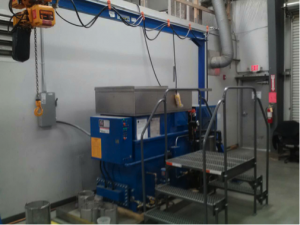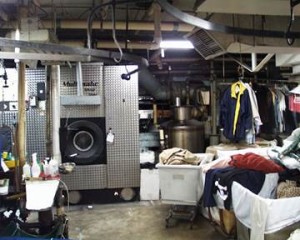1-Bromopropane
Posted on by1-Bromopropane (1-BP), also known as n-propyl bromide (nPB), is an organic solvent used in a number of commercial and industrial applications. 1-BP may be found in products used in vapor and immersion degreasing operations for cleaning metal, plastics, electronic and optical components; in adhesive spray applications; and in dry cleaning operations. 1-BP may also be a component of some aerosol spray products.
The National Institute for Occupational Safety and Health (NIOSH) last blogged about 1-BP in December 2008. Since that time, more data have become available concerning 1-BP; these additional data are helpful to employers, workers, safety and health professionals, and any others who are interested in occupational health issues related to 1-BP. Yesterday, the U.S. Occupational Safety and Health Administration (OSHA) and NIOSH released a Hazard Alert that is a useful source of current information related to 1-BP workplace exposure and appropriate protections.
Excessive exposure to 1-BP can cause irritation (for example, of the eyes, mucous membranes, upper airways, and skin) and can damage the nervous system. Neurologic effects can appear as headaches, dizziness, loss of consciousness, slurred speech, confusion, difficulty walking, muscle twitching, and/or loss of feeling in arms and legs. Animal studies suggest that 1-BP exposure may be associated with reduced blood cell counts and immunosuppression along with toxicity to the liver and to the reproductive and neurologic systems. Based on animal studies, the National Toxicology Program is currently considering classifying 1-BP as “reasonably anticipated to be a human carcinogen.”
The risk of health effects to workers from 1-BP exposure depends on its concentration in the air they breathe, how much comes in contact with skin, and length of exposure. OSHA does not have a Permissible Exposure Limit (PEL) for 1-BP; NIOSH is currently developing a Recommended Exposure Limit (REL). In 2010, the California Occupational Safety and Health Administration adopted a PEL for 1-BP of 5 parts per million (ppm) time weighted average (TWA). The American Conference of Governmental Industrial Hygienists (ACGIH) recommended a TWA threshold limit value (TLV) of 10 ppm in 2005; in 2011, ACGIH proposed lowering the TLV-TWA to 0.1 ppm.
Exposures to 1-BP in occupational settings occur via two primary routes: (1) inhalation of 1-BP vapors and mists; and (2) skin contact with 1-BP. Monitoring worker exposures to 1-BP should take into account both potential exposure routes. Air sampling of 1-BP vapor should be conducted to aid in determining workers’ potential inhalation exposure levels. Because 1-BP is readily absorbed by the skin, biological monitoring (such as the measurement of 1-BP or its metabolites in the urine of exposed workers) may be a useful tool to evaluate the exposure of workers who have skin exposure. Resources cited in the OSHA/NIOSH Hazard Alert provide information concerning methods of evaluation of worker exposures to 1-BP via air sampling and biomonitoring.
Based on the principles of general occupational hygiene practice, the following types of controls (listed in order of preference) should be considered to control workplace exposures to 1-BP:
- Eliminating the hazard of concern or substituting with a less toxic/hazardous process material are the most effective ways to reduce exposures to a potentially hazardous substance. For example, in workplaces where 1-BP is used in a spray adhesive application, water-based or acetone-based adhesives may be able to be substituted for 1-BP based adhesives. However, replacement chemicals may have associated hazards that need to be considered and controlled.
- Engineering controls to reduce employee exposure to an airborne contaminant, preferably at the point where the contaminant gets into the air, or otherwise isolating the contaminant away from worker locations are effective means for reducing exposure. There are a variety of types of engineering controls that might be considered – some of the major categories of controls include isolation and ventilation. All types of controls involve issues that may need to be considered on a case by case basis in individual worksites. Always work with qualified individuals when considering such controls.
- Administrative controls, which are management-dictated work practices and policies to reduce or prevent exposures to workplace hazards, should be considered in workplaces using 1-BP.
- Personal protective equipment (PPE) is used when engineering controls are not feasible, during the interim period when engineering controls are being installed or repaired, or when engineering and administrative or work practice controls are not effective in adequately reducing exposure. In most workplaces using 1-BP considerations related to PPE might include both respiratory and skin protection.
1-BP is a potential occupational health hazard used in numerous commercial and industrial settings. Help us distribute this blog and the Hazard Alert to those who work with 1-BP so that appropriate actions can be taken to prevent or minimize workplace exposures to 1-BP in all workplaces where it is used.
Doug Trout, MD, MHS; Naomi Hudson, DrPH, MPH; Scott Dotson, PhD, CIH; Kevin Hanley, MSPH, CIH, REHS/RS
Posted on by



